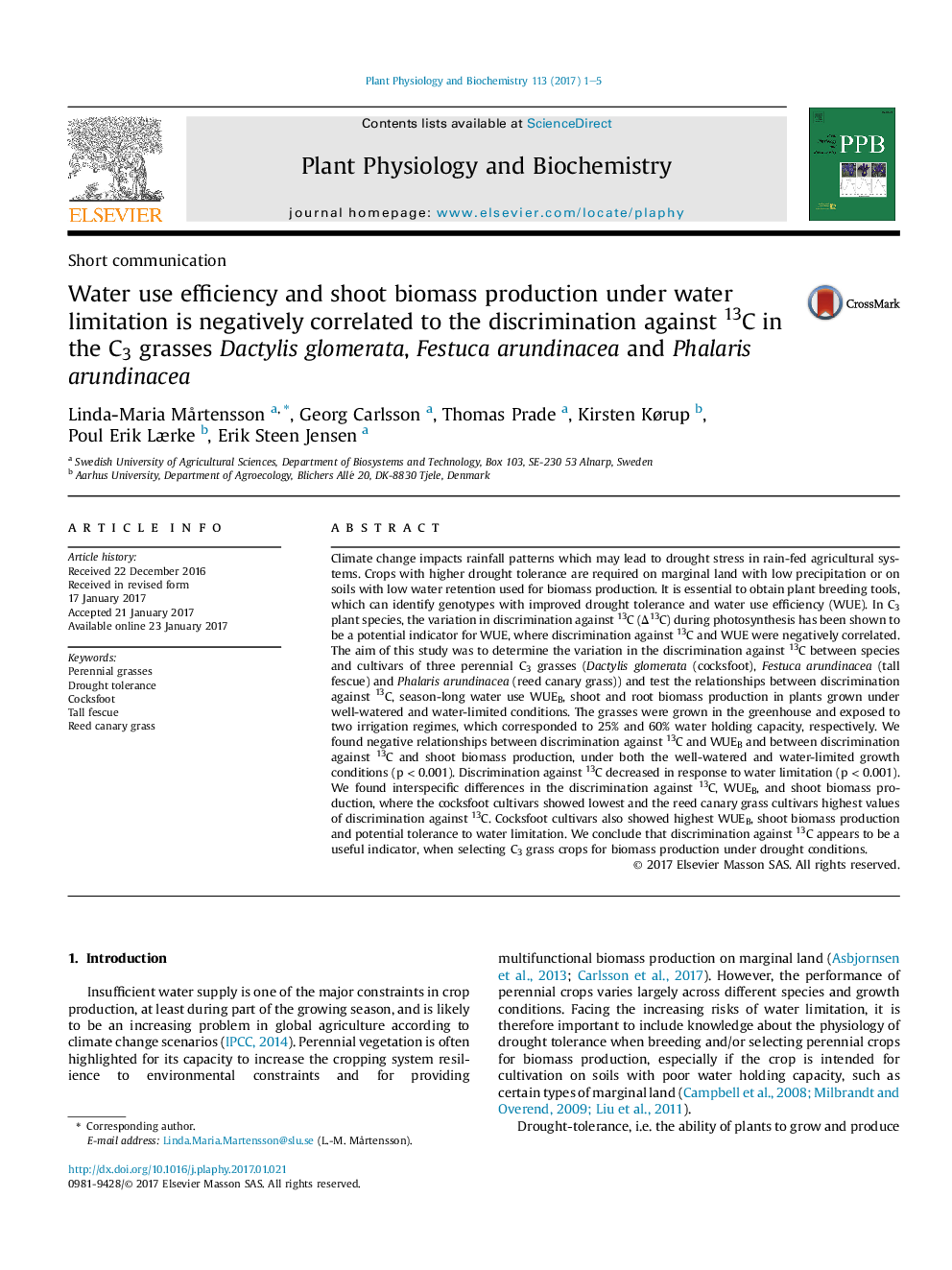| Article ID | Journal | Published Year | Pages | File Type |
|---|---|---|---|---|
| 5515590 | Plant Physiology and Biochemistry | 2017 | 5 Pages |
â¢The negative relationships between Î13C and WUE and between Î13C and shoot biomass production were confirmed for high-yielding perennial biomass grass crops.â¢We found interspecific differences in Î13C, WUE, and shoot biomass production.â¢Cocksfoot cultivars showed lowest and the reed canary grass cultivars highest values of Î13C.â¢Cocksfoot cultivars showed highest WUE, shoot biomass production and potential tolerance to water limitation.â¢We conclude that stable carbon isotopic composition appears to be a useful indicator, when selecting C3 grass crops for biomass production under drought conditions.
Climate change impacts rainfall patterns which may lead to drought stress in rain-fed agricultural systems. Crops with higher drought tolerance are required on marginal land with low precipitation or on soils with low water retention used for biomass production. It is essential to obtain plant breeding tools, which can identify genotypes with improved drought tolerance and water use efficiency (WUE). In C3 plant species, the variation in discrimination against 13C (Î13C) during photosynthesis has been shown to be a potential indicator for WUE, where discrimination against 13C and WUE were negatively correlated. The aim of this study was to determine the variation in the discrimination against 13C between species and cultivars of three perennial C3 grasses (Dactylis glomerata (cocksfoot), Festuca arundinacea (tall fescue) and Phalaris arundinacea (reed canary grass)) and test the relationships between discrimination against 13C, season-long water use WUEB, shoot and root biomass production in plants grown under well-watered and water-limited conditions. The grasses were grown in the greenhouse and exposed to two irrigation regimes, which corresponded to 25% and 60% water holding capacity, respectively. We found negative relationships between discrimination against 13C and WUEB and between discrimination against 13C and shoot biomass production, under both the well-watered and water-limited growth conditions (p < 0.001). Discrimination against 13C decreased in response to water limitation (p < 0.001). We found interspecific differences in the discrimination against 13C, WUEB, and shoot biomass production, where the cocksfoot cultivars showed lowest and the reed canary grass cultivars highest values of discrimination against 13C. Cocksfoot cultivars also showed highest WUEB, shoot biomass production and potential tolerance to water limitation. We conclude that discrimination against 13C appears to be a useful indicator, when selecting C3 grass crops for biomass production under drought conditions.
